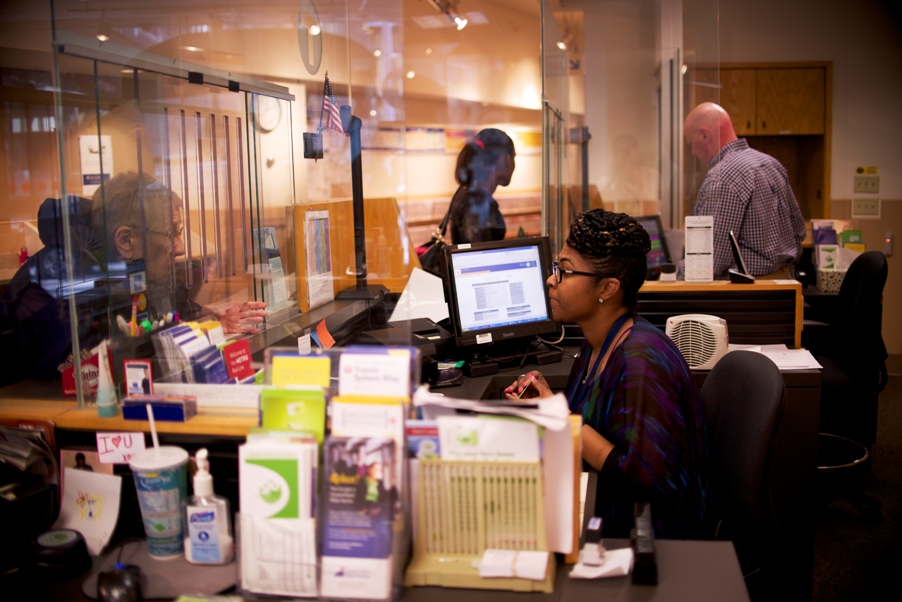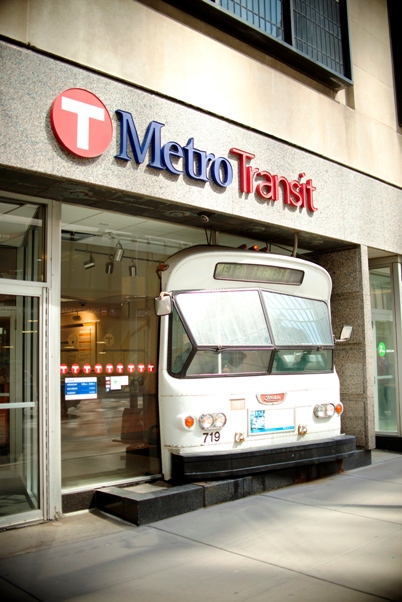 For the last six years, Dan Hackman has made regular stops at Metro Transit’s retail store in downtown St. Paul to purchase Day Passes – $6 fare cards that allow him to make unlimited trips on a bus or METRO line for 24 hours.
For the last six years, Dan Hackman has made regular stops at Metro Transit’s retail store in downtown St. Paul to purchase Day Passes – $6 fare cards that allow him to make unlimited trips on a bus or METRO line for 24 hours.
Hackman lives near the store, in the skyway level of the U.S. Bank Building, and said he uses the passes to visit patients he works with as a Personal Care Assistant.
“I like that I don’t have to worry about having any money in my pocket,” he said during a recent visit.
While such transactions have long been the lifeblood of Metro Transit’s St. Paul and Minneapolis retail operations, the stores' employees have spent less time on fares and more time on general customer service in recent years.
To reflect the change, the stores are being rebranded as Service Centers, where customers can stop in for help planning trips, to collect Lost & Found items or ask basic questions about Metro Transit's services.
The shift from fare sales to general service has been precipitated by the ease of online sales, Auto Refill and use of bulk fares like Metropass and U-Pass, which provide unlimited rides for a flat fee. The spread of ticket-vending machines and expansion of fare card sales to more than 100 Cub stores and other locations throughout the metro has also allowed customers to get fares at locations that are most convenient to them.
While the Minneapolis and St. Paul Service Centers still sold more than $4.7 million in stored fares last year, employees are now as likely to plan trips, answer questions about schedule changes or detours and introduce new or out-of-town customers to their transit options as they are to help customers with fares.
Traffic has remained constant but about half of those who visit Metro Transit’s Service Centers now come to purchase fares, add value or replace a lost Go-To Card. The rest come looking for transit information or other types of help. On average, 800 people visit the Minneapolis store on Marquette Avenue each weekday; another 400 visit the St. Paul location.
“As it has become easier to pay fares, we are seeing fewer sales but the traffic hasn’t gone down because people still want and need help,” said Mary Capistrant, who supervises retail revenue operations.
Linda Seidl, who started at Metro Transit 40 years ago, has seen the evolution first hand. When she started, Seidl sold tokens and paper punch fare cards. The punch cards were replaced by magnetic cards in the 1980s, and Go-To Cards with stored value were introduced nearly a decade ago.
The change in fare technology has benefited customers in numerous ways, including the ability to replace a lost, registered Go-To Card without losing any of its stored value, Seidl said. “Before, if they lost a card, someone was smiling but it wasn’t them,” said Seidl, who has come to know many regular customers in her decades of service.
A former Metro Transit driver, Tim Johnson began at the Minneapolis location a year ago. He said fare sales remain an important part of the job but that he and other employees play a powerful role helping people who are new to transit. Many times, employees will drive to their first day of work then come to the Service Center looking for a way to get there using transit.
If a boarding location is nearby, customers may be walked or directed to their stop; other times a printed map helps get customers where they need to go.
“It’s nice to be able to give them something tangible – a piece of paper that says go here and get on this bus,” Johnson said. “To send them with a map is important because a lot of people have never ridden a bus before.”
Aisha Dancy worked with customers over the phone in the Transit Information Center before moving behind the counter at the Minneapolis location three years ago. Dancy said working directly with customers is rewarding because she gets to see them leave with newfound confidence and hear about their successful trips during a subsequent visit.
“A lot of people will come back and thank me,” she said. “It’s nice to know that it worked out and that they got where they needed to go.”
In St. Paul, the questions have recently turned to the METRO Green Line. Laquanda Jarrett, who works at the St. Paul Service Center, said customers come in every day to ask for a schedule or to find out when the light rail line is opening (June 14).
“Every single day, we get at least 20 people asking about it,” Jarrett said. “They’re just so excited and ready.”
Metro Transit Service Centers At a Glance
 Minneapolis
Minneapolis
History: Original location opened at the IDS Center in downtown Minneapolis in 1979. The operation moved to its street-level storefront on Marquette Avenue in 1986.
Address: 719 Marquette Ave., Minneapolis
Hours: 7:30 a.m. - 5:30 p.m., Monday – Friday; ticket vending machine available during business hours.
Fun fact: The Minneapolis ticket-vending machine is among the highest-grossing in the system, generating more than $100,000 in retail sales each month.
St. Paul
History: A small kiosk opened in the in Ecolab building in 1980. The store later relocated to Town Square. It has been located in the U.S. Bank Center since 1988.
Address: Skyway, US Bank Center, 101 E. 5th Street
Hours: 8:30 a.m. – 4:30 p.m., Monday – Friday; ticket-vending machine available 24 hours a day.
Fun fact: The location’s Snoopy statue, among the last remaining in St. Paul, is regularly outfitted with seasonal attire. Downtown workers and tourists often stop by to snap a photo with the statue.
> Metro Transit Service Centers
> Metro Transit Retail Outlets
> Metro Transit Online Store